Homemade Garden Spray
I use this homemade garden spray on my herbs, flowers and veggies. I use it when I notice aphids or leaf hoppers or their tell tale signs.
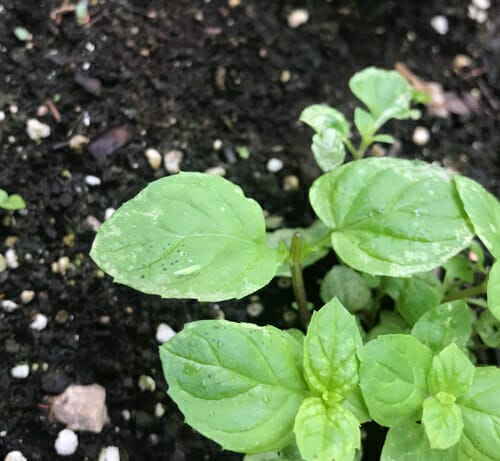
The little sap sucking insects can be hard to spot until your plants show signs of damage. You may notice that leaves on herbs, flowers or vegetables have white markings. These are due to the sap being sucked out of the leaves. Eventually the leaves may curl or turn brown.
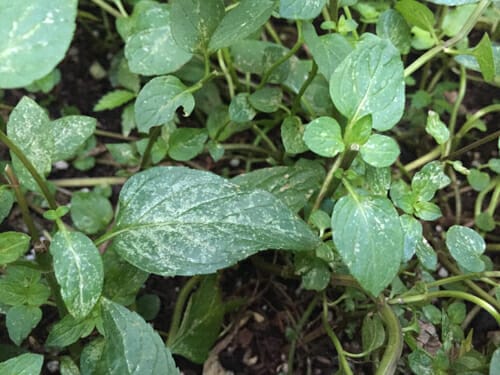
Homemade Garden Spray for Leaf Hoppers
Leaf hoppers are tiny wedge shaped insects that hop from leaf to leaf. The adult version can be up to 1/2 inch and can fly. The larvae form is a tiny version of the adult, without wings that lives on the underside of leaves. There are many varieties that come in various colors. I usually find green ones that blend in with fresh leaves. They jump or fly away quite quickly if startled, so if you see a flash of movement when you shake a plant and your plant has the tell tale signs, you might have leaf hoppers. They feed on the juicy leaves and fruits which is why they’re not welcome in my garden!
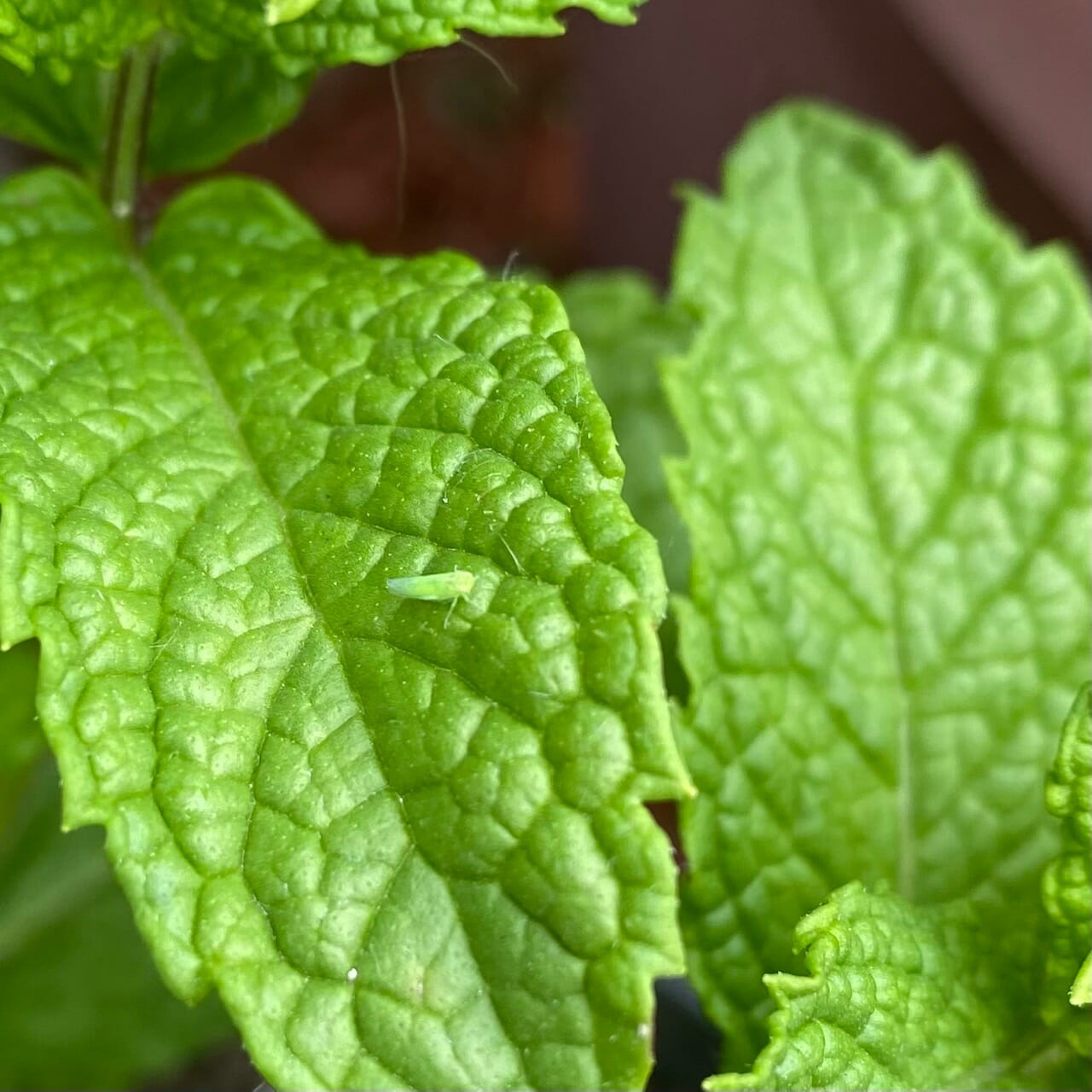
Homemade Garden Spray for Aphids
Aphids are also very tiny sap suckers and again there are several varieties. They too like to hang out underneath the leaves or on the stems. Usually if there’s one, there’s a whole bunch. Here are a couple of close ups of aphids. And here’s a link to Farmer’s Almanac on controlling aphids.
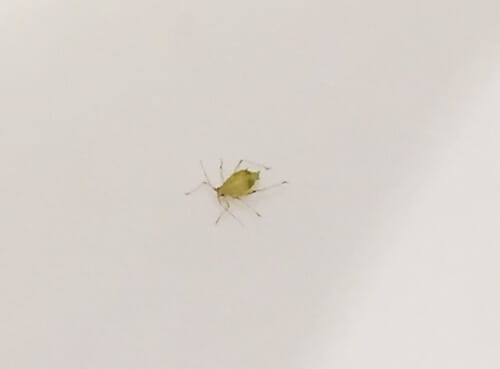
This homemade garden spray is a DIY version of commercial insecticidal soap. Insecticidal soap is the mildest chemical you can use on insects. Whether you make it yourself or buy it from the store, you’ll need to reapply regularly because it works on contact with the insect. If you have a severe infestation or want something more aggressive, check with a credible greenhouse in your area to talk about your options.
You’ll find this homemade garden spray most effective against aphids, thrips, spider mites, mealy bugs and leaf hoppers. But remember, the spray needs to make contact with the bugs.
Some plants are more sensitive to soap than others, so test your spray on some bottom leaves first and wait a day to see how it goes. Plants that are stressed because of drought or disease may not tolerate soap spray at all, so always monitor carefully.
The hot pepper in my concoction works to deter mammals like bunnies and deer that are irritated by the spicy hot sensation from the Capsaicin in hot peppers. Capsaicin is an irritant to mammals but not to insects, so adding hot peppers won’t do anything to stop adult aphids and leafhoppers. The oils in hot pepper may coat eggs of insects, but any oil will pretty much do that.
So, if you have bunnies, deers or neighbourhood cats use the hot pepper. If you just have insect issues you can omit the hot pepper.
Homemade Garden Spray Recipe
General ratio is 2 Tbsp dish soap to 1 gallon (30ml/3.7L) or 10 ml/1litre of water. Don’t over do it!
Homemade Garden Spray
Ingredients
- 1 litre water
- 2 Tbsp liquid dish detergent or pure liquid castile soap not antibacterial
- 1-2 dried whole cayenne peppers optional
Instructions
- In a spray bottle, combine all ingredients. Do not shake, you don't need it to be foamy. Cayenne is only necessary if you have bunnies or deer you're trying to chase away as well.
- Spray all over plants, including and especially the underside of leaves in early morning or evening. Avoid spraying in full sun to prevent the plant from scorching.
- Repeat every two days.
- Monitor your plant leaves carefully, some plants are more sensitive than others to the detergent. If you see any signs that your plant does not like the spray (yellowing or wilting leaves) – stop immediately.
Video
Notes
A lot of these insects thrive in hot, dry conditions. Some information on garden pests suggests that just rinsing or spraying your plants with water will deter these insects as well. Maybe you want to give that a try, especially if you have very sensitive plants that may not tolerate the soap.
You can also try commercial insecticidal soap.
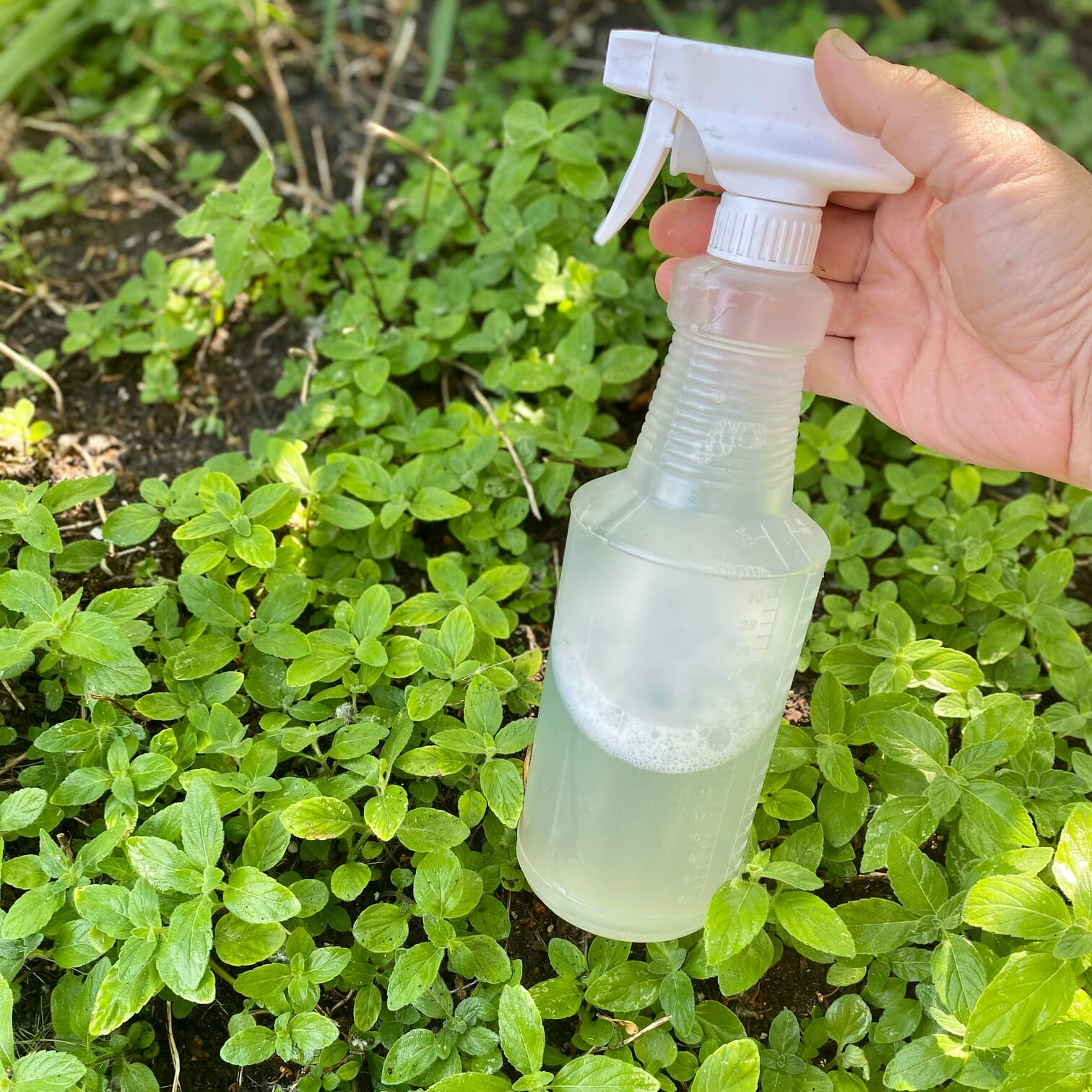
Are aphids or leaf hoppers an issue in your garden? How do you control them?
Sign up to get articles by Getty delivered to your inbox. You’ll get recipes, practical tips and great food information like this. Getty is a Professional Home Economist, speaker and writer putting good food on tables and agendas. She is the author of Manitoba’s best-selling Prairie Fruit Cookbook, Founder of Fruit Share, a mom and veggie gardener.


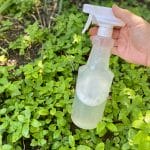
Hi Getty… thanks for all the great advice. I am finding that this spray is not working on the (big family of) slugs that are eating my basil plant.
Did a bit of ‘googling’ and saw that coffee grounds used in moderation will deter them. Anything else that you have found will work?
Also, I found that the chili flakes in the Home Garden Spray recipe swelled up overnight and ended up clogging my spray bottle, making it uselss. 🙁 In the future, I will put the liquid through a sieve before putting it in the bottle to keep the spray mechanism clear.
Yeah, this spray is intended for smaller flying pests, not slugs. I have used crushed egg shells to form a perimeter around the base of plants – slugs don’t like sliding over sharp, prickly things. I’ve also used beer traps.
Good idea to run your mixture through a sieve. I’ve never had an issue, but that sounds brilliant!